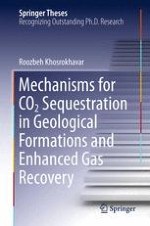2016 | OriginalPaper | Buchkapitel
5. Shale Gas Formations and Their Potential for Carbon Storage: Opportunities and Outlook
verfasst von : Roozbeh Khosrokhavar
Erschienen in: Mechanisms for CO2 Sequestration in Geological Formations and Enhanced Gas Recovery
Aktivieren Sie unsere intelligente Suche, um passende Fachinhalte oder Patente zu finden.
Wählen Sie Textabschnitte aus um mit Künstlicher Intelligenz passenden Patente zu finden. powered by
Markieren Sie Textabschnitte, um KI-gestützt weitere passende Inhalte zu finden. powered by
